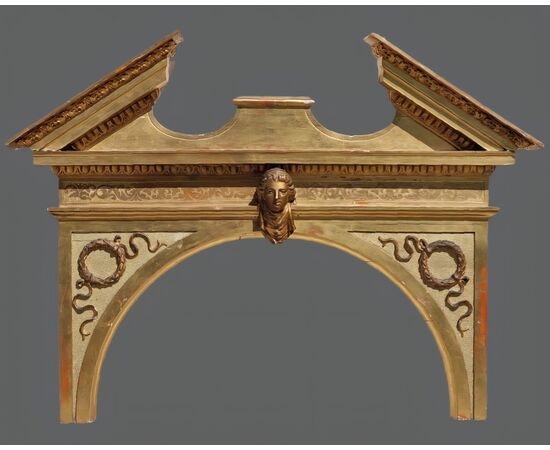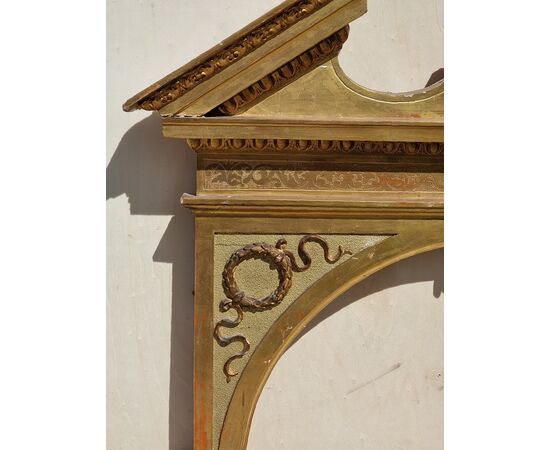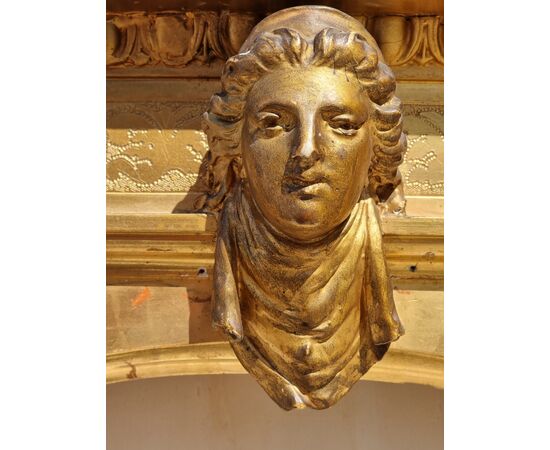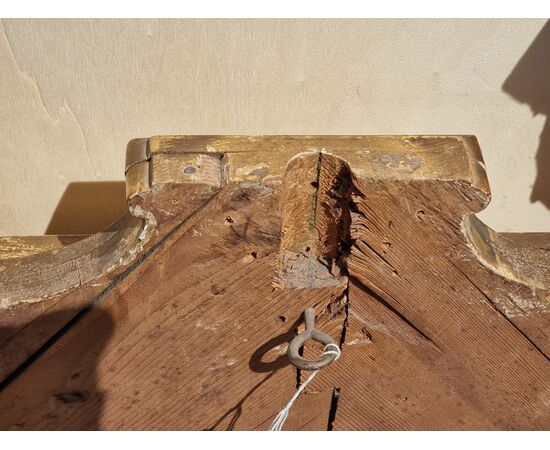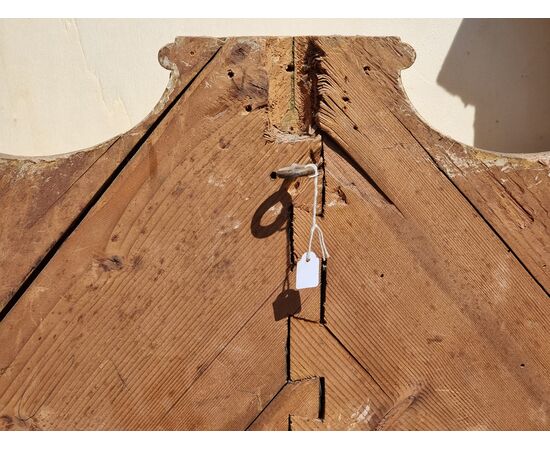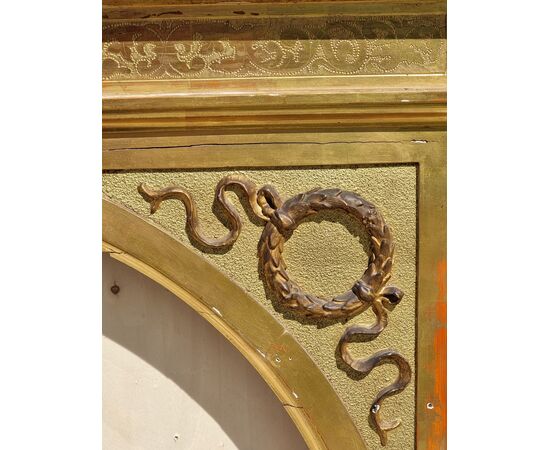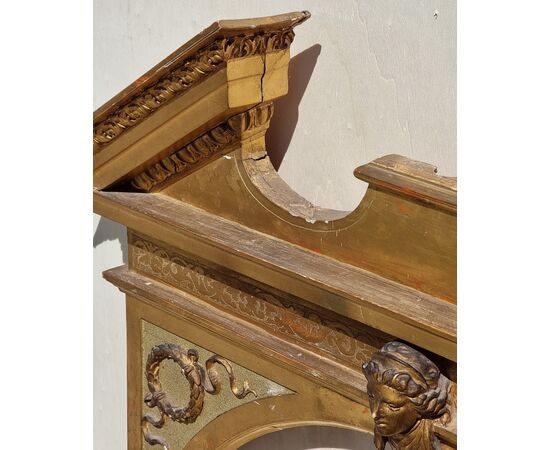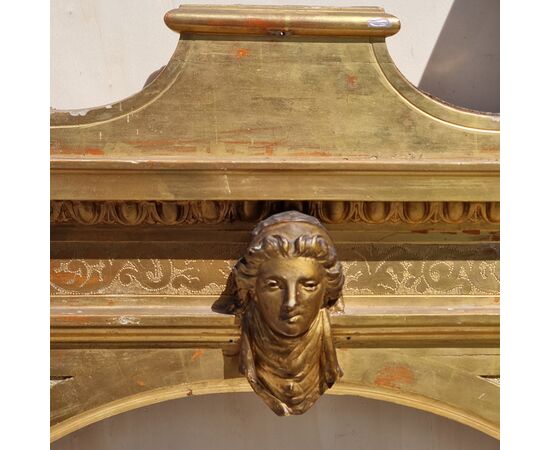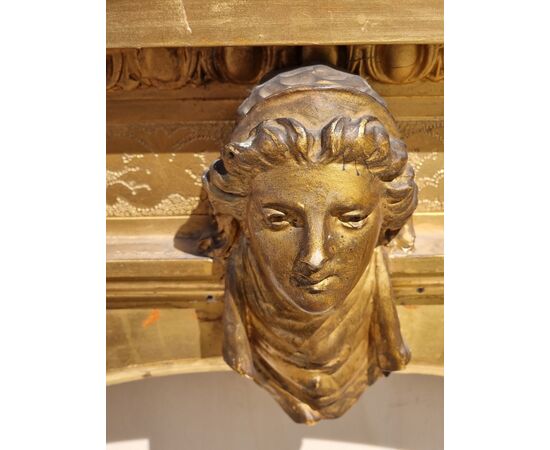Large gilded decorative frieze in pastiglia, Northern Italian area, Empire period (first quarter of the 19th century).
Important architectural frieze in wood and gilded pastiglia, dating back to the first quarter of the 19th century, attributable with good probability to the Northern Italian area. The work, created according to the taste and techniques of the Empire period, features an elaborate broken tympanum structure, with a underlying arch and rich relief decoration. The frieze, of generous dimensions (77 x 102 cm), was likely part of a monumental boiserie, an architectural furnishing or used as an overdoor, but it can also be reconverted as a mirror or an important decorative frame. The decoration is entirely made of gilded pastiglia, according to a technique characteristic of neoclassical production, and not by means of wooden carving. The gilding is applied on orange bole (clearly visible in some worn parts), typical of gilding from the Po Valley-Lombardy area. At the center of the arch stands the bust of a female figure, perhaps a goddess or a classical allegory, modeled with soft and intense features, framed by symmetrical curls and flowing draperies. On the sides, decorative motifs develop with laurel wreaths intertwined with ribbons and ornamental snakes, both iconographic elements consistent with imperial and neoclassical symbolism. The work presents a well-balanced decoration between vegetal and symbolic elements, with a refined burin work of the backgrounds that restores depth and movement to the gilded surface. The back shows a solid wooden structure with staves assembled with dovetail joints. Conditions: generally good for the era, with localized wear, cracking and small losses of gilding due to time. The frieze needs cleaning and some slight conservative restoration, but it is stable and legible in its original structure. A rare and versatile element, it represents an excellent example of Italian neoclassical architectural decoration and can be reused in both classic and eclectic contexts, with a strong scenographic impact. For more information or technical details, do not hesitate to contact us. Worldwide shipping available with professional packaging.

